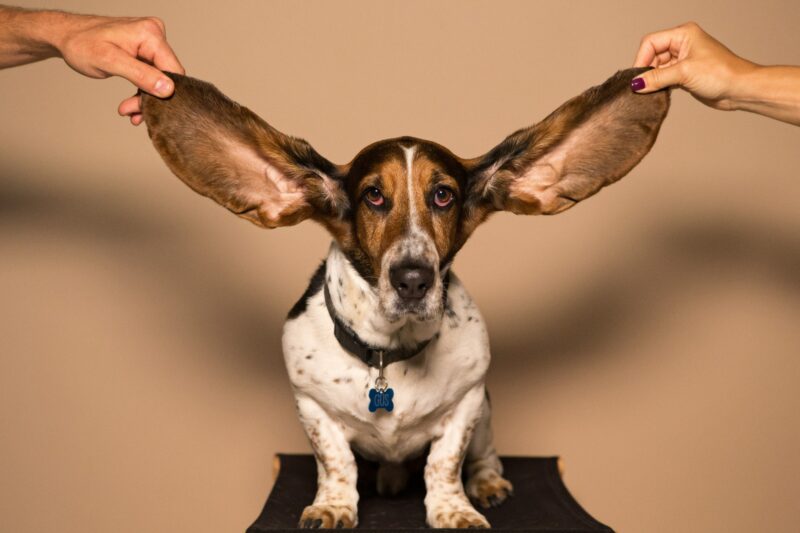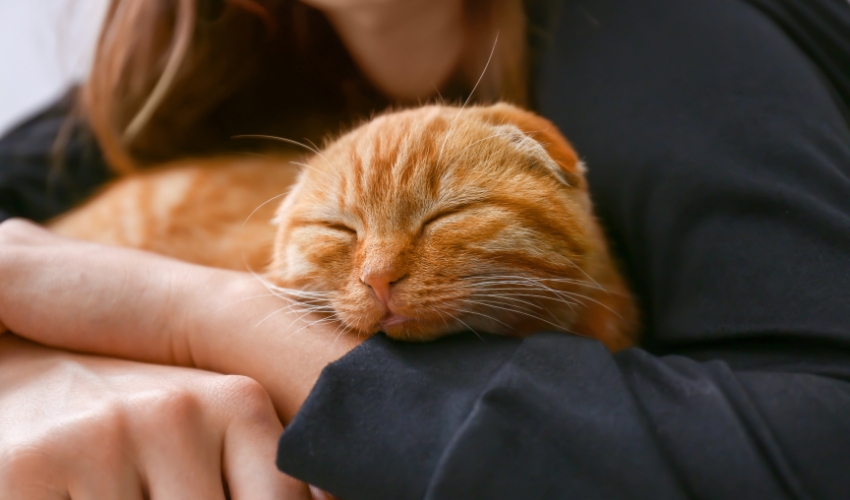Maintaining good ear hygiene is just as important as teeth hygiene for your canine companion’s overall health. According to PetMD, a healthy dog ear is clean and dry. It’s normal for small amounts of microscopic bacteria and yeast to live in your pup’s outer ear canal, but when a buildup of debris occurs—or the normal, healthy ear canal is compromised—bacteria and yeast can overgrow and cause an infection.
Knowing the signs of ear problems can help pet owners, like you, catch the problems early and treat it early! Here are a few signs that your furry companion has ear problem:
- Redness: Inspect your pooch’s ear flap or around the ear canal. Redness inside the ear flap or around the ear canal can indicate irritation and potential infection.
- Odor: Is there any foul smell coming out of your pooch’s ear? A strong or foul odor from the ear can be a sign of an infection.
- Ear scratching: Has your fur baby been ear scratching or head shaking excessively? One of the overlooked actions that pet owners usually miss is the scratching around the ear and head shaking. Excessive scratching or head shaking can be signs of an ear infection.
- Head shaking: As mentioned earlier, head shaking or tilting can be a common symptom of an ear infection. Your fur baby may be trying to relieve pressure building up in their ear hence the persistent head shaking.
- Discharge: Gently lift your pup’s ear and check for any discharge. Discharge in your dog’s ears can be a sign of an infection. If there’s any discharge seen, it’s important to take note of the color so you can report it to your vet.
- Oozing: Your dog may ooze pus or clear fluid from their ear if it is infected. Oozing usually happens in severe ear infections.
- Pain: Always listen to your pooch. Dogs with a perforated eardrum may whimper when their ear is touched, continuously scratch or rub their ear, or tilt or shake their head.
- Scabs: According to the American Kennel Club, the most common sign of a mite infestation is a scab or abrasion at the base of the ear. This can be a result of a dog scratching with his hind limb claws. Bacteria can infect the open wounds, leading to infection.

Ear problems can be overwhelming, especially that they are in a tricky place to check. That is why it is important that you know how to take care of your fur baby’s ear hygiene. Here are few tips on how to keep your pooch’s ears clean and healthy:
- Regular inspection: The first and easiest thing that you could do is to check your fur baby’s ears regularly. Check for signs of redness, swelling, discharge, or a bad odor. You should also look for any foreign objects such as grass seeds or ticks, that may have been lodged in their ears.
- Gentle Cleaning: Moisten a cotton ball or gauze pad with a veterinarian-approved ear cleaning solution, and gently wipe just the visible parts of your pooch’s ears. Avoid inserting anything into your pooch’s ear canal itself unless instructed by your vet, as this can push debris even further in or damage the ear. Cleaning your pooch’s ear can be tough sometimes and it might need some getting used to. Just remember that it’s for their own good.
- Regular Grooming: Fur babies with long, floppy ears may be more prone to ear issues. Regular grooming, including keeping hair around their ears trimmed, can help maintain good air circulation. In addition, breeds with hair in their ear canals, such as Poodles, may need more frequent attention to prevent matting and infection.
- Dietary considerations: Some ear issues, especially chronic ear infections are often related to food allergies. So, if you’ve noticed a foul smell, a black or brown build-up, persistent ear itching, you might need to consult with your veterinarian about your fur baby’s diet and whether any adjustment might be beneficial.
- Professional Check-ups: It would be best to include ear examinations as part of your fur baby’s routine veterinary check ups. If you notice any abnormalities or if your fur baby frequently shakes their head or scratches at its ears, consult with your vet promptly.
- Know Your Dog’s Breed: this might sound pretty basic and simple, but knowing your pooch’s breed plays an important role in their health. Different dog breeds may have different ear care needs. Some pooch’s are more prone to ear infections than others, so understanding your pooch’s specific requirements is essential.
- Consult With A Veterinarian: If you’re not comfortable and unsure about how to clean your fur baby’s ears or if you notice any signs of ear issues you can always seek guidance from your veterinarian. Your veterinarian can provide specific recommendations based on your fur baby’s individual needs.
Now that you know how to take good care of your furry friend’s ears, here are few things to avoid doing to their ears:
- Never stick anything in your dog’s ear: No matter how much you want to help your fur baby remove something from their ear, you should never stick anything into their ears. This can injure the eardrum and cause permanent damage.
- Don’t use cotton-tipped swabs: Using q tips can be controversial, but it’s time to put an end to it. Cotton-tipped swabs can push dirt and debris deeper into your dog’s ear canal, causing infections and trauma. It would be doing more harm than good.
- Don’t grab your dog by the ears: This can be painful and distressing for your pooch. It can also cause physical harm and lead to aggressive behavior.
- Don’t try to clean your dog’s ears if they’re stressed or struggling: Being able to tolerate ear cleaning or loving ear cleaning isn’t every dog’s strong suit. This could upset and may also harm your dog. If this happens, you can ask for help and tips from your vet.
Always remember that each dog is unique and it’s really important that you tailor your approach to your furry friend’s specific requirements. Remember, regular monitoring and preventive care will go a long way in maintaining your fur baby’s ear health. Keep infections at bay, always check your pooch’s ears for signs of problems.












